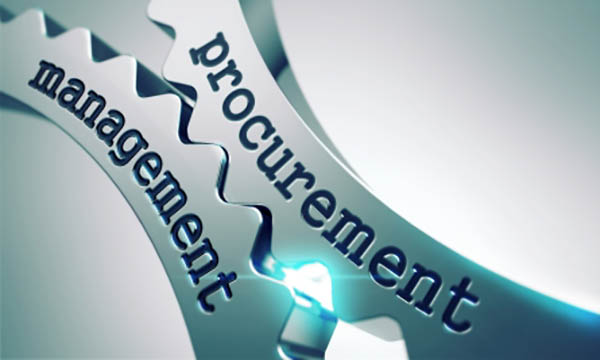Editor’s Note: Lisa Romango is the Executive Director of the Institute for Supply Management-Pittsburgh (ISM-Pittsburgh) and has served in the role for 20 years. She is responsible for the execution of the chapter’s overall strategic plan, providing fiscal and administrative oversight, and delivering professional development and networking programs to the membership. Prior to joining ISM-Pittsburgh she worked in finance and procurement in the steel, healthcare, and airline industries.
Irving Berlin once said, “Life is 10 percent what you make it and 90 percent how you take it.” On January 15, 2021, 308 days after a global pandemic caused a major shift in how businesses operate, the Institute for Supply Management – Pittsburgh (ISM-Pittsburgh) hosted a webinar for members of its Executive Council to talk about how their teams “took it” and managed during COVID-19. The Council is comprised of seventeen senior executives who lead Supply Management for their respective companies in the Western Pennsylvania region.
The meeting covered various topics including accessing goods and services including Personal Protective Equipment; the impact of working from home on quality, velocity, and alignment; and the overall impact to a healthy work-life balance. The relevance of the information and data exchanged among the Council members led ISM-Pittsburgh to host essentially the same discussion one month later for its general membership. It was a unique opportunity to compare and contrast the thinking of leadership to the perspectives of the individual procurement professionals.
Technology was at the forefront of many procurement organizations’ efforts as they worked to transition to a fully remote work environment. Procurement executives expressed a consensus that the transition went “surprisingly” well. While some just moved to working from home using their notebooks others had to decide on how best to provide their team members with the necessary technology to perform their duties remotely. Companies were able to successfully implement new systems as complex as Oracle or as basic as procure-to-pay systems. Others completed business acquisitions. Most importantly across a diverse range of businesses all successfully recruited and on-boarded new staff without the need to be “in-person”.
The general membership shared a similar sentiment with regard to technology’s role in a successful transition to a remote work environment. The use of video meetings, screen sharing, and the benefits of digital signature capabilities all played a role in a relatively smooth transition to enable working from home.
Procurement executives indicated the ability to acquire and distribute PPE was challenging but made possible through relationships both intracompany and intercompany. Additionally, some organizations experienced only minimal supply disruptions at the onset of the pandemic, attributing that achievement to the efforts of their suppliers to keep their teams safe in order to maintain operations. All agreed that the pandemic highlighted the importance of following their business continuity plans. It was also noted they intend to revisit and strengthen their existing strategies.
The procurement professionals echoed the assertions of the procurement leaders stating they relied on strong relationships and well-defined practices to ensure productive outcomes for virtual meetings and adapting to ensure the goal attainment of the organization.
Procurement executives shared that while technology and processes have been top-of-mind for most companies, the health and well-being of their people was the priority at the outset and is expected to take on increasing importance even as conditions improve. The remote work environment continues and appears to be here to stay in some form. The executives shared that going forward there needs to be a balance and blending of virtual and on-site working arrangements. Some indicated that individuals who have before wanted to work only from home now express a desire to return to the office in some capacity.
The general membership shared that establishing boundaries is the key to a successfulwork from home environment. Given the constancy of virtual meetings, it’s essential to create a “hard start and stop” to ensure a transition from work life to home life. And, while the desire to work from home remains strong, others expressed optimism over a hybrid approach.
Mr. Bill Flanagan; Chief Corporate Relations Officer for the Allegheny Conference on Community Development and an Advisory Board Member to the Executive Council shared information coming from the regional business community. He affirmed that the experiences with technology, processes, and people are consistent whether in Finance, Supply Management, or other business areas. What remains to be seen is the impact on the overall corporate culture, as well as the effect on innovation. Currently individuals almost need to “schedule” moments of innovation as compared to a pre-Covid world where impromptu discussions, elevator conversations and hallway exchanges would lead to a creative idea.
As we move forward to face new challenges and opportunities, procurement organizations, executives, and professionals will be called upon to demonstrate continued resilience and adaptability in meeting evolving demands … “how to take it.” The lessons learned from this extraordinary time have prepared them to do just that.
SC
MR


Latest Supply Chain News
- Survey reveals strategies for addressing supply chain, logistics labor shortages
- Israel, Ukraine aid package to increase pressure on aerospace and defense supply chains
- How CPG brands can deliver on supplier diversity promises
- How S&OP provides the answer to in-demand products
- AI, virtual reality is bringing experiential learning into the modern age
- More News
Latest Podcast

 Explore
Explore
Business Management News
- Survey reveals strategies for addressing supply chain, logistics labor shortages
- How CPG brands can deliver on supplier diversity promises
- How S&OP provides the answer to in-demand products
- AI, virtual reality is bringing experiential learning into the modern age
- Tips for CIOs to overcome technology talent acquisition troubles
- There is still work to do to achieve supply chain stability
- More Business Management
Latest Business Management Resources

Subscribe

Supply Chain Management Review delivers the best industry content.

Editors’ Picks





